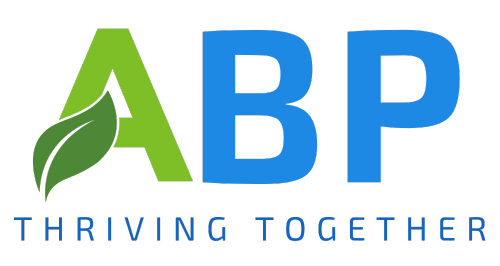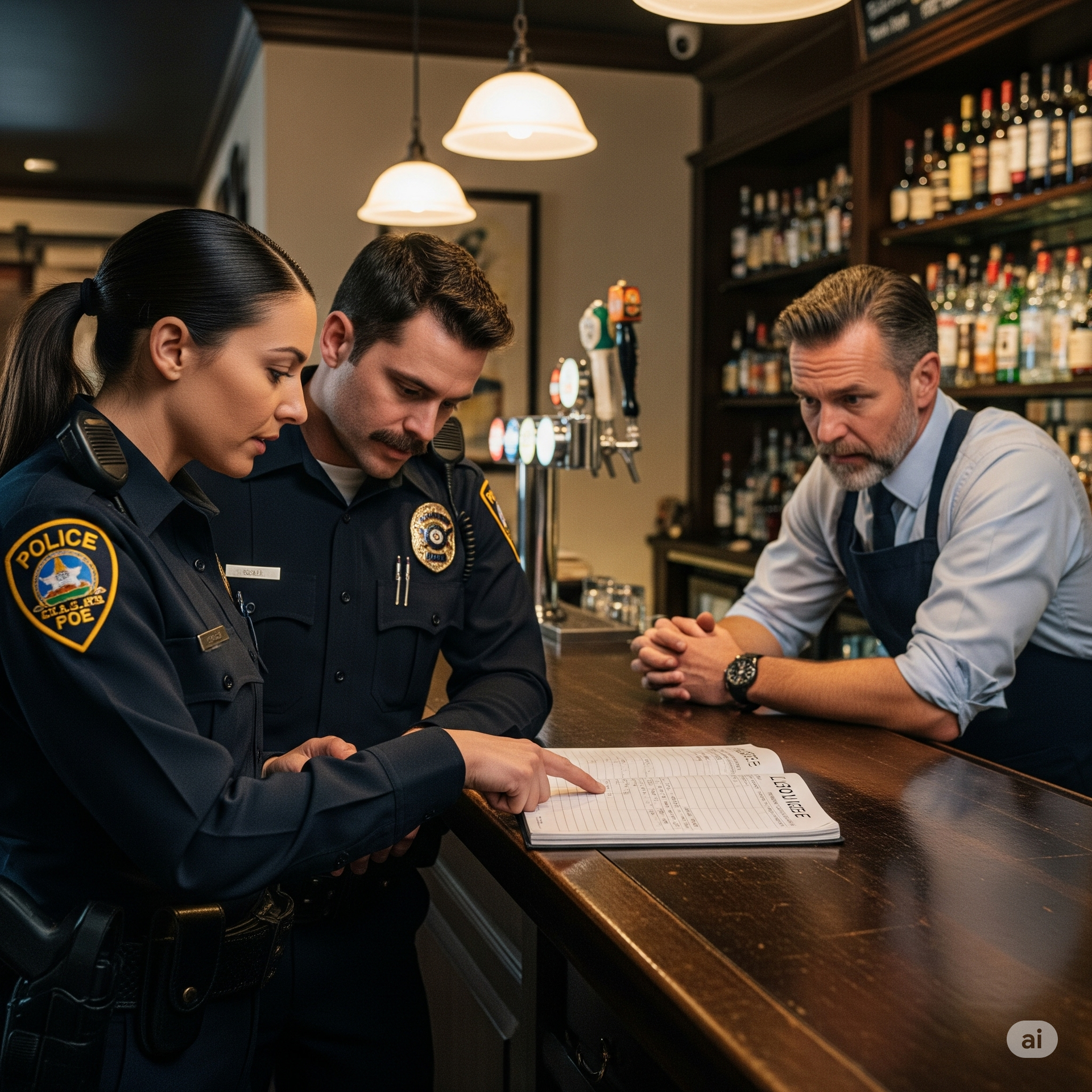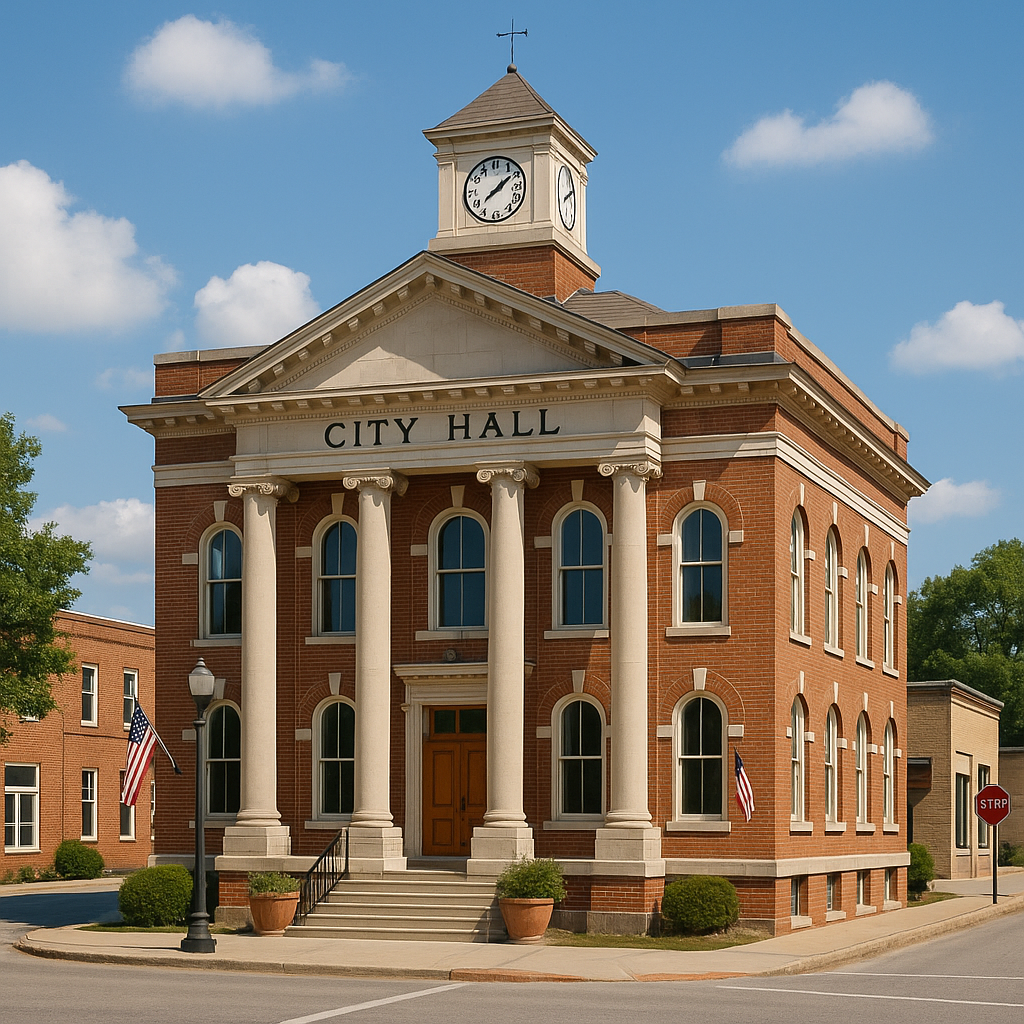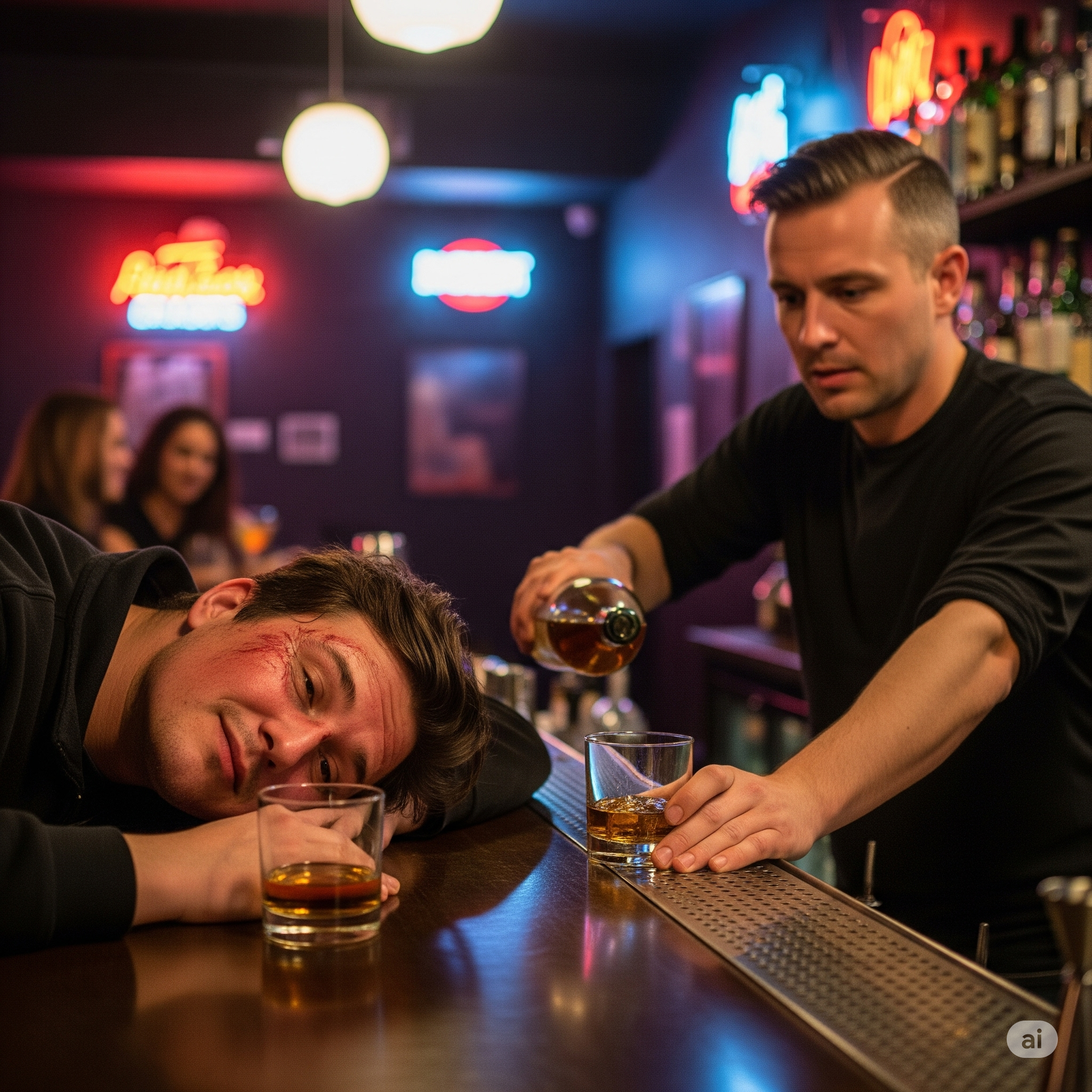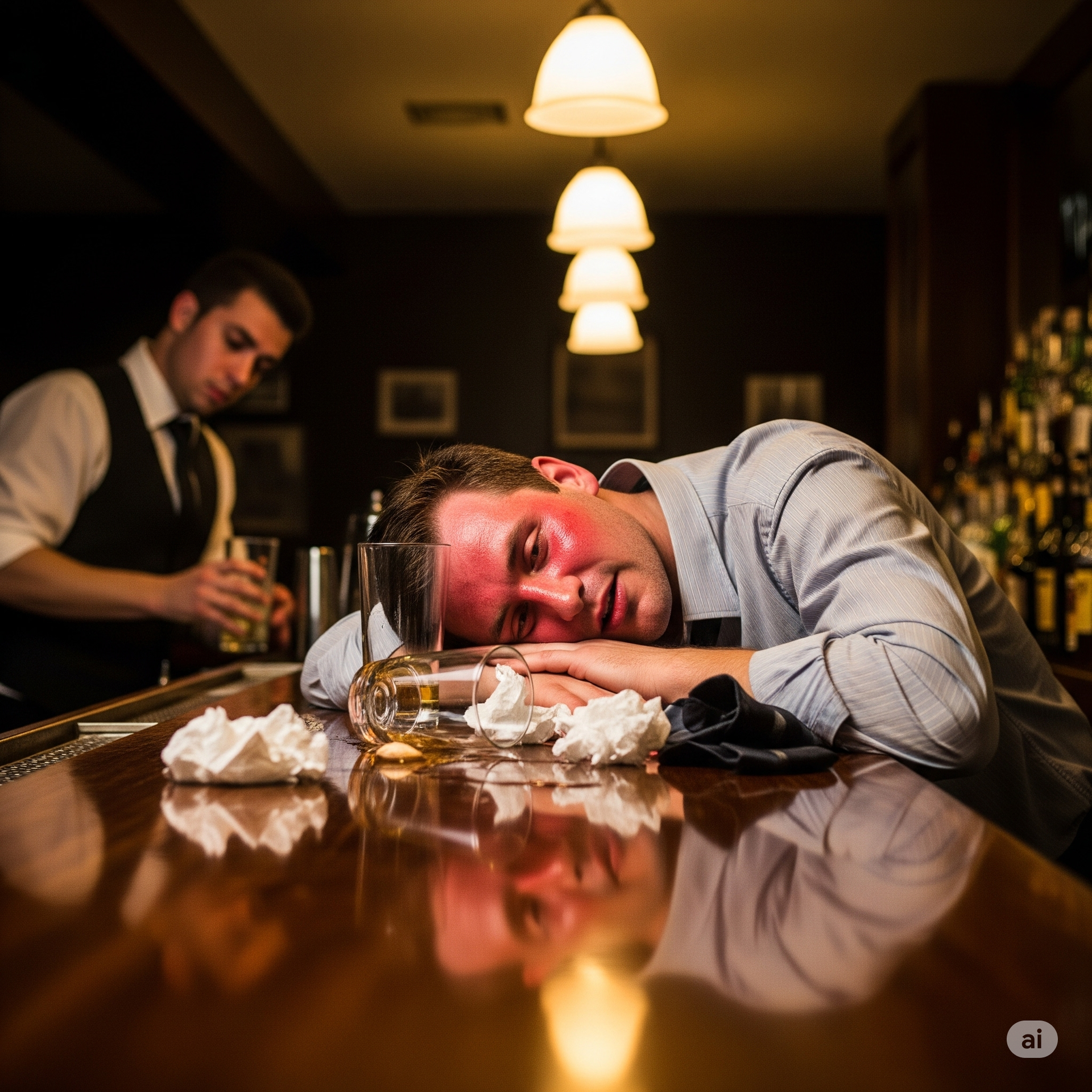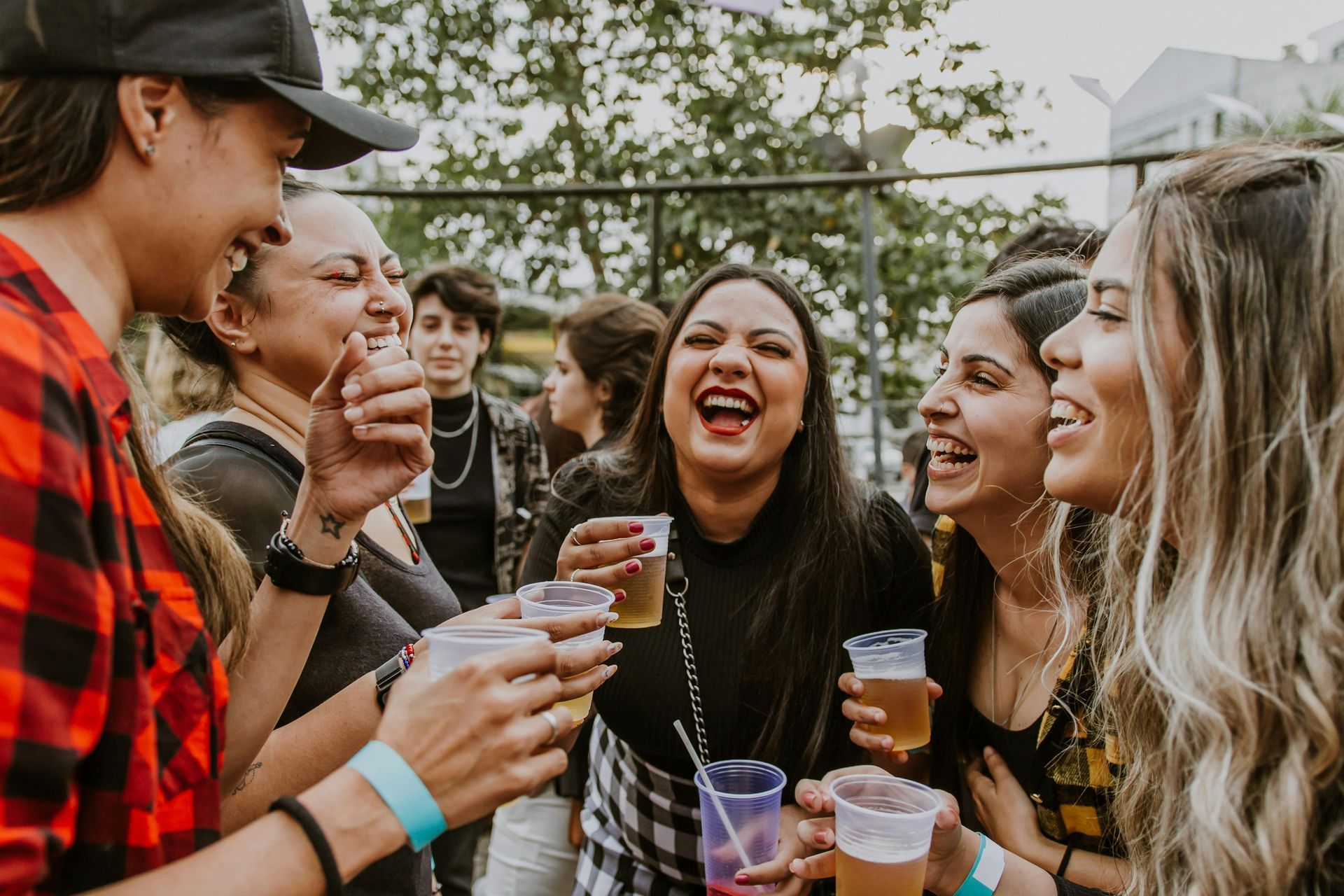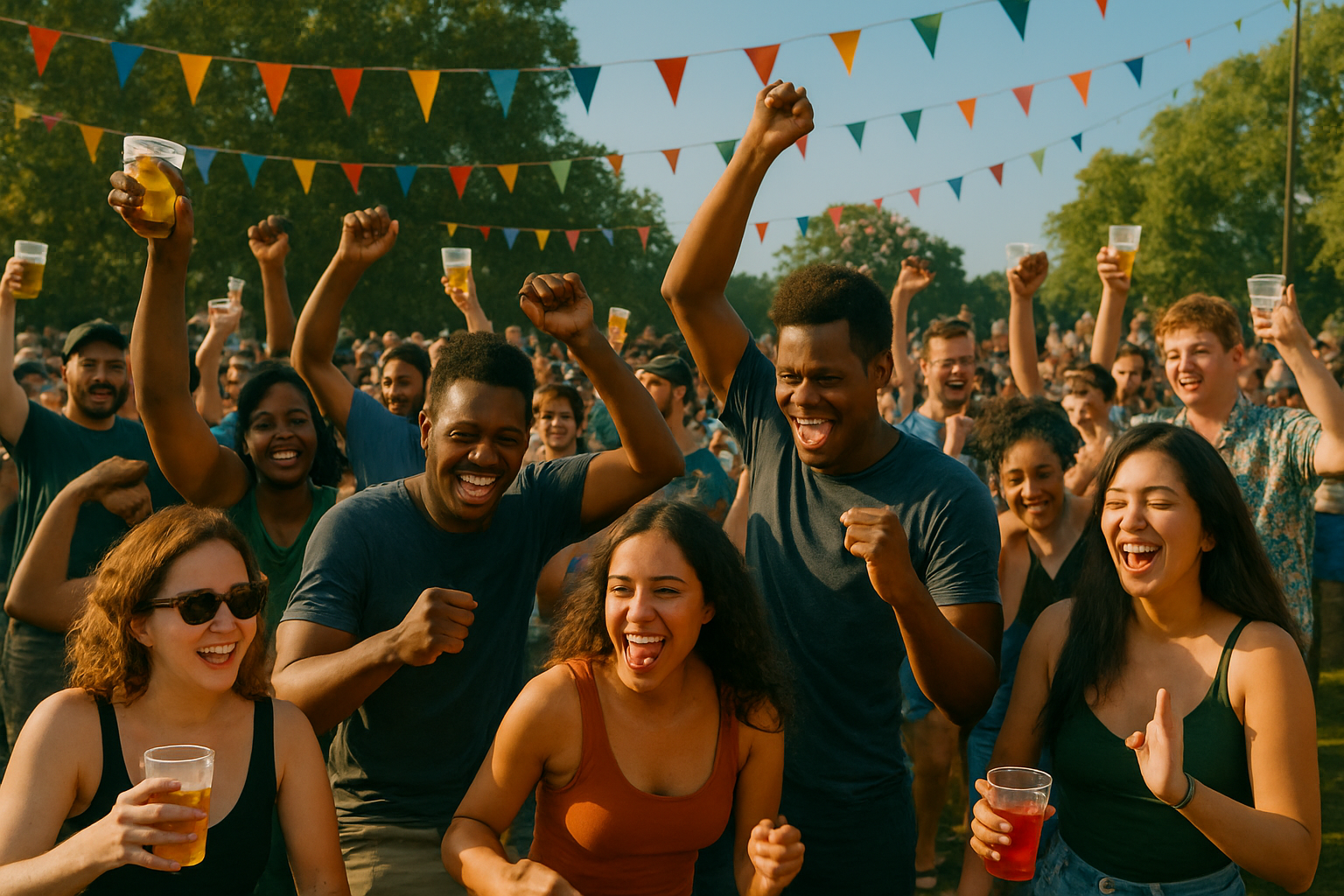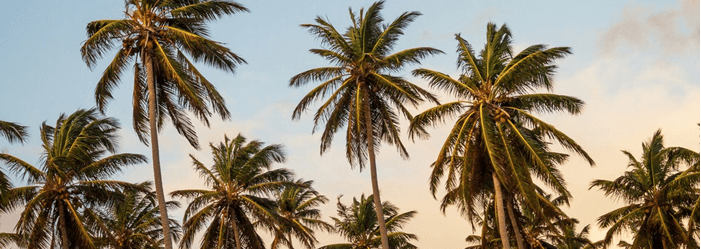Cut-offs and Reality.
(Part of the “Drunk, Drunker, and High-Risk Drunkenness” series)
PRIOR INSIGHT RECAP
- Cutting off service to obviously intoxicated customers is critical. The risk of harm increases dramatically as intoxication rises.
- When a fatal alcohol-related vehicle crash occurs, 70% of the time the driver’s BAC is .15% or higher.
Increasing cut-offs reduces DUI tragedies, sexual assaults, and calls for service.
Short on Time? Skip to the Recap Below!
Serving Obviously Intoxicated Customers is Illegal
In California, it is illegal to serve someone who is obviously intoxicated, whether it's for consumption on or off the premises.
The California Department of Alcoholic Beverage Control (ABC) defines “obviously intoxicated” as when an average person can clearly see signs such as:
- Being overly friendly, argumentative, or belligerent
- Using foul language
- Slurred speech or slow, deliberate movements
- Swaying, stumbling, or drowsiness
- Red, watery eyes
- Noticeable smell of alcohol
Penalties range from staff fines and jail time to business fines, license suspension, and even possible license revocation (for three violations within three years).
Considering such penalties, ABC license holders and their staff must take the cut-offs of those who are obviously intoxicated very seriously.
Said no one in the industry.
(That’s the topic of our next Insight.)
What Hospitality Staff Acknowledge
In my bar management workshops, I ask participants these two questions:
1. If your business actually cut off every obviously intoxicated customer, how many more guests would be cut off per day? Please average your slow days with your busy days.
- The answers are all over the map.
- Security staff always give the highest numbers.
- Servers, managers, and owners consistently report far fewer.
- Excluding security “outliers,” the average is 11 more customers cut off per day.
2. What percentage of obviously intoxicated guests do you think are cut off, according to research?
a. 50%
b. 17.5%
c. 3%
Most professionals guess 3%. Some say 17.5%. Nobody says 50%.
What do research studies tell us? It depends upon the study.
What Research Shows
- McKnight & Streff (Michigan): 17.5% were cut off; 82.5% were served more alcohol.
- Grube, Krevor, & DeJong: Only 10% refused service to drunk patrons.
- San Diego survey: 20% admitted being drunk in the past month, but only 3% reported being cut off—meaning 97% were still served.
- Norwegian Institute: 95% of “drunk” women’s late-night orders were filled; 67% of men’s before midnight. I agree that men are more likely to be cut off due to aggressive behavior, forcing intervention.
From my three decades of interviewing and training thousands of servers, the San Diego study is closest to reality: only about 3% of obviously intoxicated patrons are denied more alcohol.
While we’ll explore how drunk customers create tremendous liability for alcohol businesses in later Insights, let’s examine a few numbers to prove that an establishment can be very profitable by serving responsibly.
Profitably and Responsibility
Per the table below, which ABC uses, most drinkers appear obviously intoxicated at a BAC of .06–.10%. Tolerance among drinkers varies, but here’s what that means in terms of the number of standard drinks (over 2 hours):
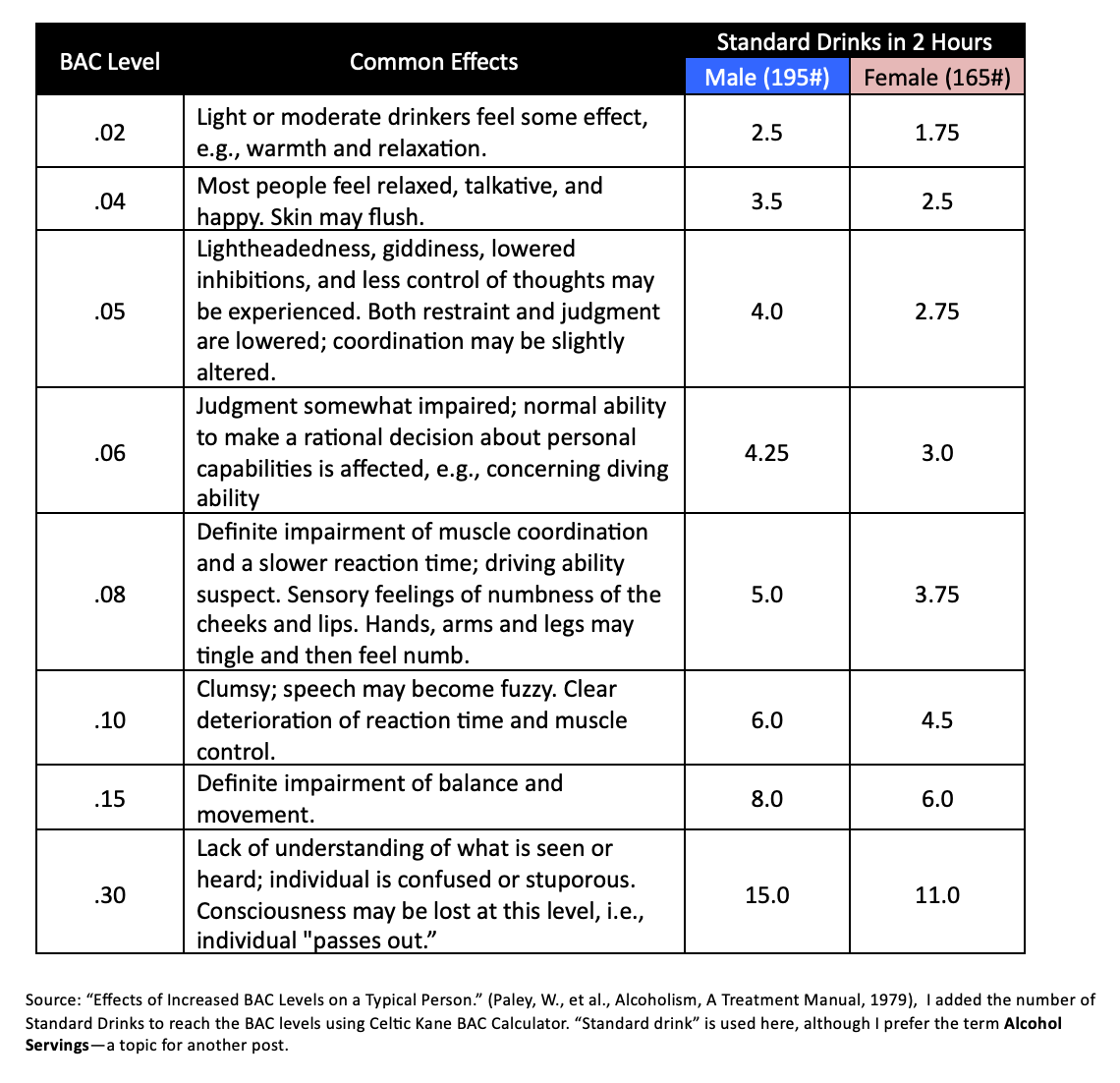
Most bars would be thrilled if guests averaged three drinks ordered. In reality, it’s closer to two drinks, late at night.
This means:
- Businesses can stay profitable and responsible by refusing service to those who are obviously intoxicated.
- Yet cut-offs remain rare.
That should make us all angry.
MADD
According to numbers shared by Mothers Against Drunk Driving, “two out of three people will be impacted by drunk driving in their lifetime.”
Not surprising when:
- California has 48,690 on-sale alcohol businesses.
- Staff acknowledge that on average, 535,590 drunk customers leave daily without being cut off.
- Each drunk puts themselves and the public at risk—and drains city resources through excessive calls for service.
This should prompt all of us to be concerned about the safety of those we love.
In the Insights that follow, we’ll explore what each stakeholder can do to significantly increase cut-offs, which will save city public safety dollars and, most importantly, save lives.
FUTURE TOPICS IN THIS SERIES
- How the ABC can influence cut-offs
- How cities can influence cut-offs at new businesses
- How cities can influence cut-offs at existing businesses
- How to guide businesses to increase cut-offs
- How cut-offs reduce customer churn (turnover)
RECAP
It is illegal to serve alcohol to someone who is obviously intoxicated.
Studies suggest only 3% to 17.5% of obviously intoxicated customers are cut off from additional alcohol service.
Businesses can be profitable by only serving customers who are not obviously intoxicated.
Hospitality staff acknowledge that the vast majority of obviously intoxicated customers are not cut off from additional alcohol service.
